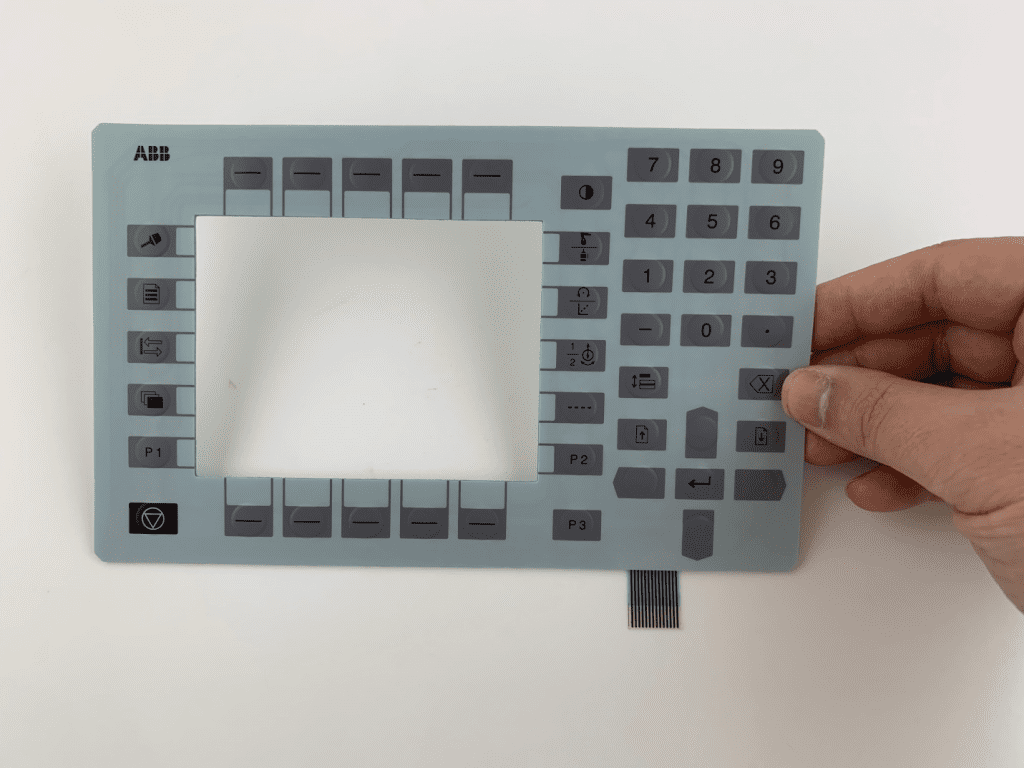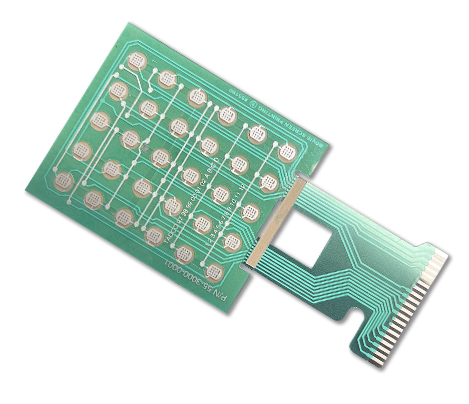Top Applications for Membrane Switches in Consumer Electronics
Recognizing the Relevance of Membrane Switches in Interface
Membrane switches are indispensable elements in the layout of efficient user interfaces, helping with not just functionality yet likewise enhancing aesthetic allure and individual interaction. Their one-of-a-kind functions, such as resistance to ecological elements and customizable styles, make them ideal for a diverse selection of applications across several sectors. As we check out the future patterns and numerous advantages connected with Membrane technology, it comes to be clear that these buttons are much more than simply components; they represent a convergence of technology and practicality. The ramifications of this modern technology on user experience are worth taking a look at better.
What Are Membrane Buttons?

The spacer layer, which includes adhesive residential or commercial properties, enables the separation of the circuit layer from the overlay, ensuring that the button stays in a non-activated state up until pressed. When stress is put on the overlay, it compresses the spacer layer, connecting the gap and completing the circuit in the underlying layer. This style not only lowers the physical room required for traditional mechanical switches however also boosts the longevity of the gadget, as Membrane buttons are normally resistant to dirt, wetness, and other ecological aspects.
Typically located in applications varying from consumer electronic devices to medical tools, Membrane buttons are important to modern innovation, supplying a efficient and straightforward interface that straightens with contemporary layout demands.
Benefits of Membrane Buttons
While various button technologies exist, Membrane Switches offer distinctive advantages that make them especially preferable in various applications. Among the primary benefits of Membrane switches is their small layout, which allows for space-saving applications in devices where property is restricted. Their slim profile not just boosts aesthetic charm yet also assists in light-weight construction.
One more substantial advantage is their resistance to environmental factors. Membrane switches are commonly sealed against wetness, dirt, and impurities, making them optimal for usage popular environments, such as medical gadgets and commercial tools. This durability prolongs the life expectancy of the button, lowering maintenance costs and enhancing dependability.
Moreover, Membrane buttons can be tailored to fulfill specific design requirements, incorporating distinct graphics and colors that improve individual communication. Their responsive comments choices can likewise be customized to supply an enjoyable customer experience. In addition, Membrane buttons are economical, especially in high-volume applications, as they can be created effectively.
Applications in Different Industries

In the consumer electronics field, Membrane buttons prevail in gadgets such as microwaves, cleaning makers, and remote controls. Their responsive comments and aesthetic choices enhance customer experience while offering a sleek, contemporary look. Furthermore, automobile suppliers use Membrane switches in control panel controls and infotainment systems, where room is limited, and customer engagement is essential.
Furthermore, the commercial industry leverages Membrane switches in control panels for equipment and tools, enabling for instinctive operation in commonly severe settings. Their resistance to chemicals and moisture makes sure long life view it and reliability in these applications. Generally, the adaptability of Membrane Switches adds considerably to their prevalent usage, making them important in numerous technical domains.
Style Factors To Consider for Membrane Switches

When creating Membrane buttons, numerous key considerations should be thought about to make certain optimum functionality and user experience. The option of materials is crucial; choosing resilient, top notch substratums can boost the button's durability and resistance to environmental elements such as wetness and temperature fluctuations.
Secondly, the layout of the visuals overlay must focus on clearness and ease of use. Symbols and message need to be clear, and the layout should facilitate instinctive communication (membrane switches). In addition, responsive you can try this out comments is important; including a tactile dome or various other devices can improve the user experience by providing physical verification of activation
One more essential factor is the button's electrical performance. Developers should guarantee that the conductive traces are properly made to lessen resistance and avoid signal disturbance. This includes assessing the called for actuation force and guaranteeing compatibility with the digital elements they will user interface with.

Future Fads in Membrane Innovation
As technology remains to advance, Membrane buttons are poised to progress significantly, driven by advancements in products and producing strategies. One emerging fad is the incorporation of innovative materials, such as flexible substrates and conductive inks, which boost durability and minimize the total weight of Membrane switches. These products not just improve the responsive response but additionally permit for the style of buttons that can withstand harsher environmental problems.
In addition, the integration of touch-sensitive innovations is changing typical Membrane Switches into more interactive interface. Capacitive touch sensors embedded within Membrane button panels can give a more user-friendly and receptive customer experience, straightening with the expanding need for smooth, contemporary styles in customer electronic devices.
In addition, innovations in printing strategies, such as digital and 3D printing, enable rapid prototyping and customization of Membrane switches. This flexibility allows manufacturers to react more quickly to market demands and customer choices.
Last but not least, sustainability is coming to be a substantial emphasis, with makers checking out environment-friendly materials and processes. As these trends unravel, the future of Membrane innovation guarantees enhanced functionality, visual allure, and ecological obligation, solidifying their duty in innovative individual interfaces across various sectors.
Verdict
In final thought, Membrane Switches stand for a vital part in the design of customer interfaces, combining capability with aesthetic adaptability. As advancements in innovation proceed, the evolution of Membrane buttons is expected to more refine individual interfaces, driving technology and improving usability in a progressively complicated technical landscape.
Membrane switches are integral elements in the design of efficient customer interfaces, facilitating not only functionality however additionally enhancing aesthetic charm and customer communication.Membrane Switches serve as a crucial part in various customer interfaces, helping with a smooth communication in between individuals and electronic tools.While many switch technologies exist, Membrane Switches deal unique benefits that make them particularly preferable in numerous applications.Moreover, Membrane switches can be tailored to meet certain design needs, incorporating one-of-a-kind graphics and shades that boost user interaction.In conclusion, Membrane Switches stand for an important part in the style of user interfaces, combining functionality with aesthetic versatility.